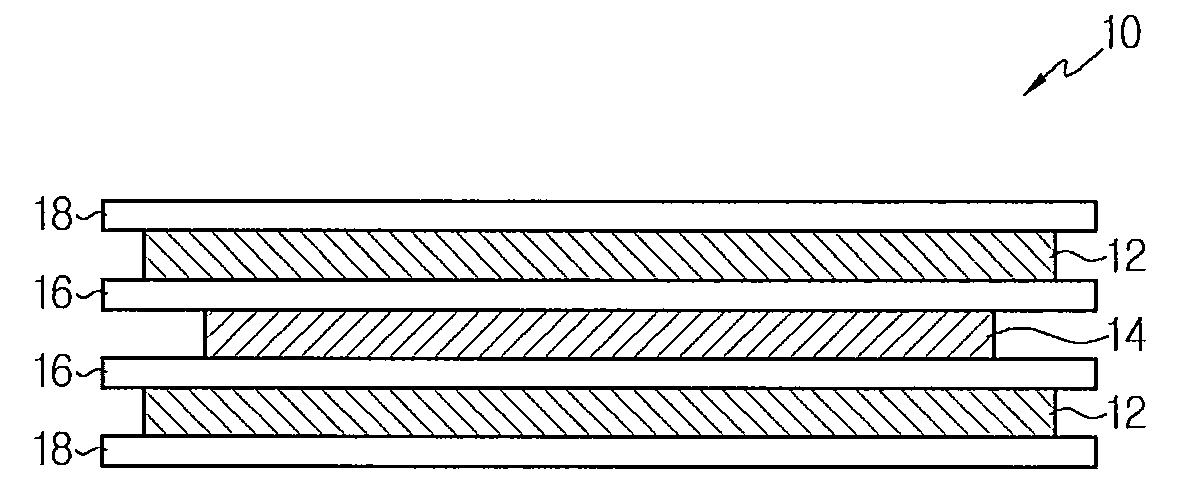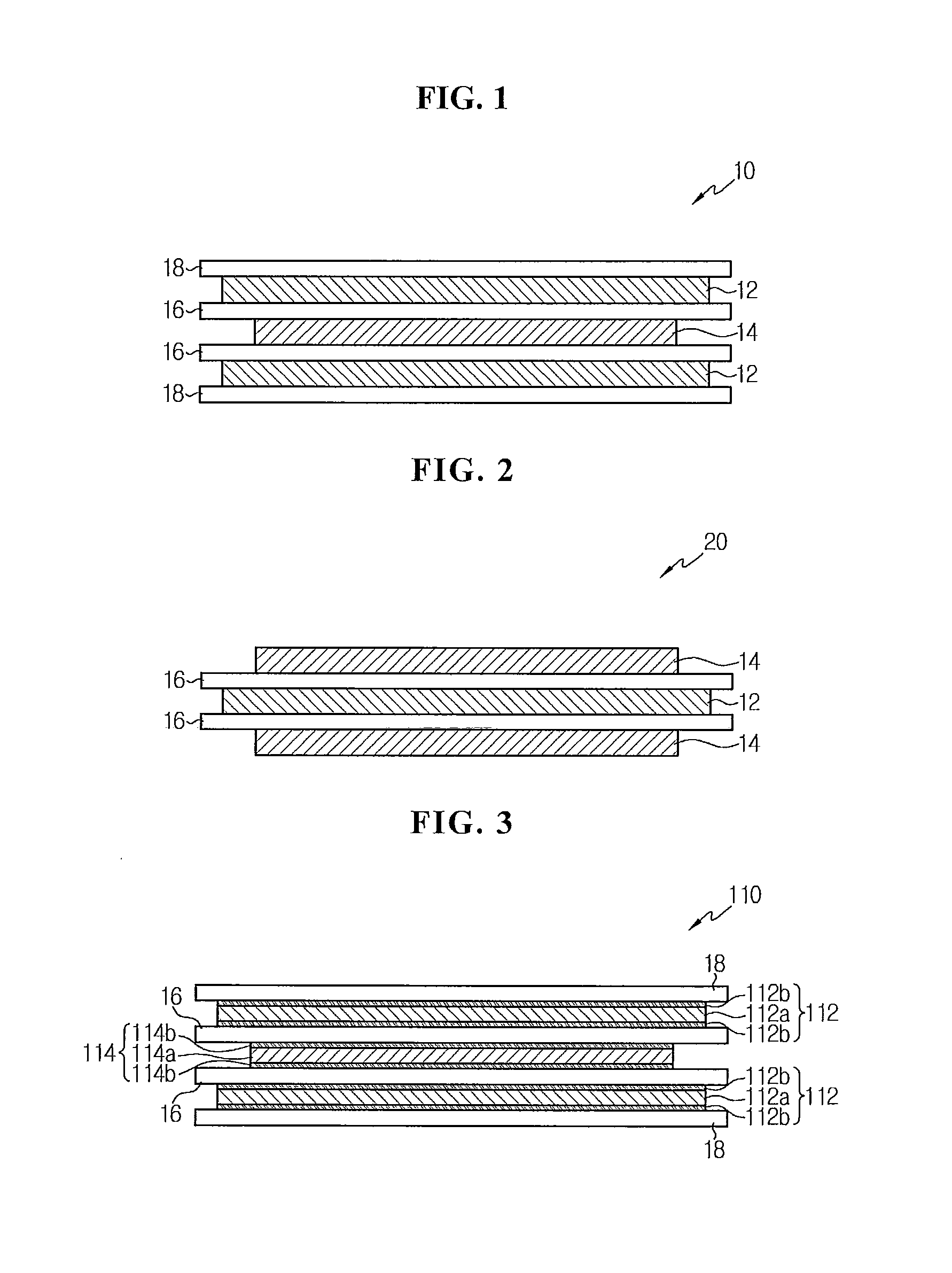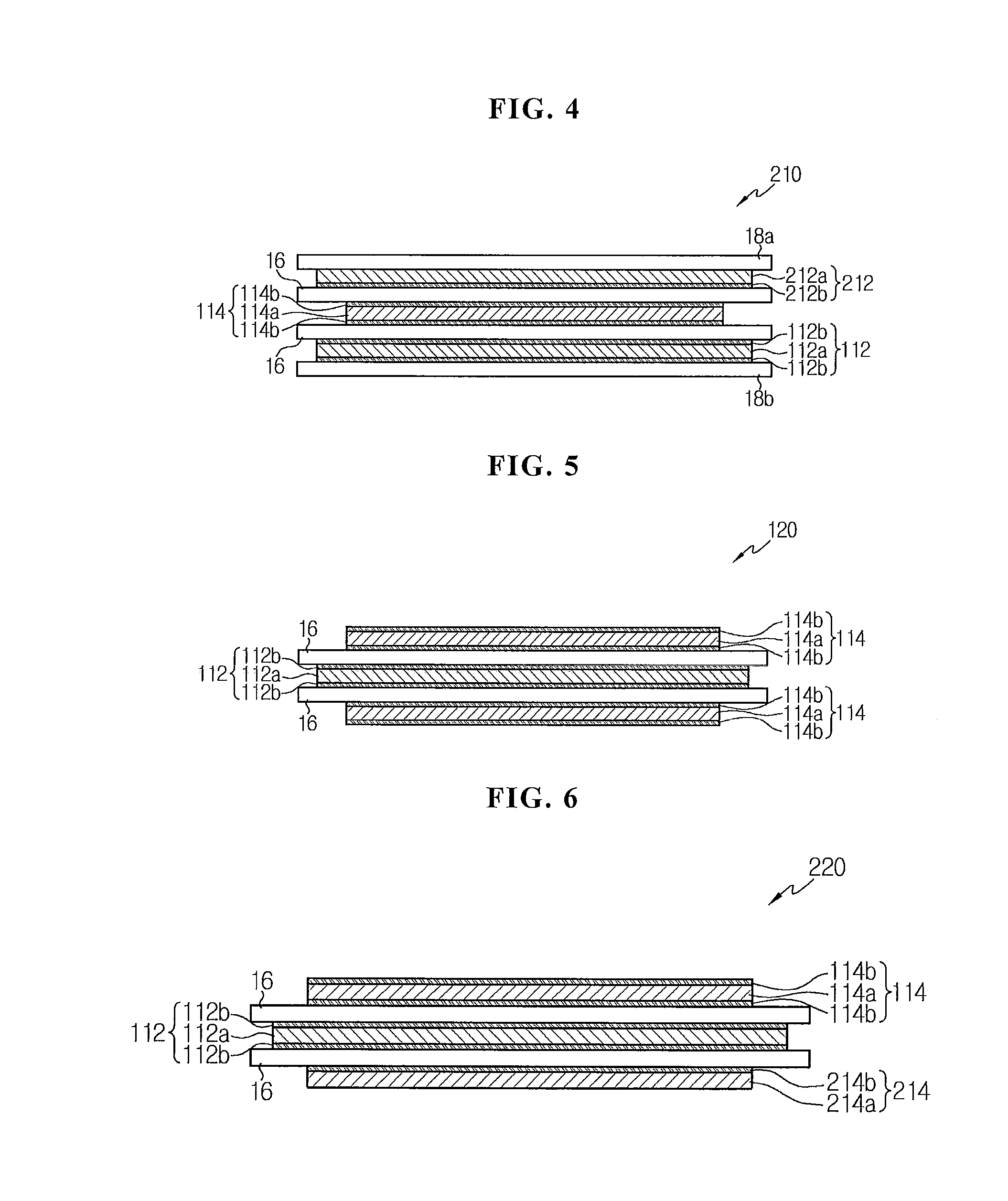Stack-type cell or bi-cell, electrode assembly for secondary battery using the same, and manufacturing method thereof
a secondary battery and stack-type cell technology, applied in the direction of cell components, sustainable manufacturing/processing, flat cell grouping, etc., can solve the problems of secondary batteries catching fire or exploding, internal short circuit, high temperature, etc., to improve the performance and yield of secondary batteries, shorten the manufacturing process, and improve the impregnation rate and wet-out rate of electrolytes
- Summary
- Abstract
- Description
- Claims
- Application Information
AI Technical Summary
Benefits of technology
Problems solved by technology
Method used
Image
Examples
Embodiment Construction
[0072]The following detailed description is provided to assist the reader in gaining a comprehensive understanding of the methods, apparatuses, and / or systems described herein. Accordingly, various changes, modifications, and equivalents of the systems, apparatuses and / or methods described herein will be suggested to those of ordinary skill in the art. Also, descriptions of well-known functions and constructions may be omitted for increased clarity and conciseness.
[0073]FIG. 1 is a schematic cross-sectional view illustrating a structure of an improved stack-type cell or bi-cell according to a preferred exemplary embodiment of the present invention. FIG. 2 is a schematic cross-sectional view illustrating a structure of a corresponding stack-type cell or bi-cell used to construct an electrode assembly for a secondary battery together with the improved stack-type cell or bi-cell of FIG. 1.
[0074]Referring to FIG. 1, the improved stack-type cell or bi-cell 10 according to a preferred exe...
PUM
| Property | Measurement | Unit |
|---|---|---|
| operating voltage | aaaaa | aaaaa |
| dielectric constant | aaaaa | aaaaa |
| dielectric constant | aaaaa | aaaaa |
Abstract
Description
Claims
Application Information
 Login to View More
Login to View More - R&D
- Intellectual Property
- Life Sciences
- Materials
- Tech Scout
- Unparalleled Data Quality
- Higher Quality Content
- 60% Fewer Hallucinations
Browse by: Latest US Patents, China's latest patents, Technical Efficacy Thesaurus, Application Domain, Technology Topic, Popular Technical Reports.
© 2025 PatSnap. All rights reserved.Legal|Privacy policy|Modern Slavery Act Transparency Statement|Sitemap|About US| Contact US: help@patsnap.com



